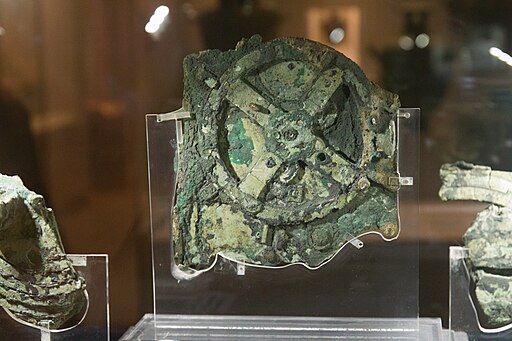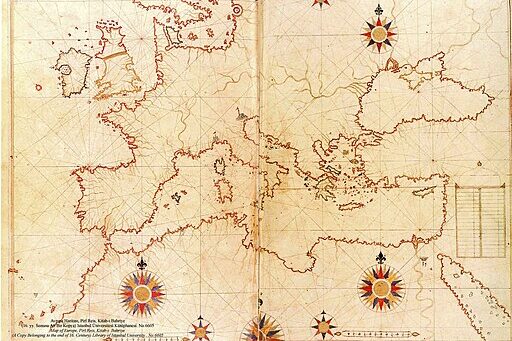
What if we weren’t the first? It’s a mind-bending idea, but one that’s picking up steam in scientific circles and dinner table debates alike. The possibility of a forgotten, pre-human advanced civilization sounds like the stuff of sci-fi novels but a handful of strange clues buried in our planet’s past suggest it might not be so far-fetched. From ancient tech-like artifacts to geological mysteries no one can explain, Earth might be hiding secrets older than humanity itself. Let’s dive into seven eerie signs that maybe—just maybe—we weren’t the first intelligent beings to call this planet home.
1. The Pyramids: Precision That Shouldn’t Be Possible

The Great Pyramid of Giza isn’t just a giant tomb- it’s an architectural enigma. Built over 4,500 years ago, it’s aligned almost perfectly with true north, constructed from over 2 million stone blocks weighing up to 80 tons each, and assembled with a level of precision that still amazes engineers today. Some of the joints are so tight you can’t slide a razor blade between them. How did ancient Egyptians achieve such feats with copper tools and no modern machinery? Mainstream historians credit brilliant planning and massive manpower, but skeptics argue the technology and astronomical knowledge required might have come from a much older, forgotten source. Were the pyramids a legacy project- built on the bones of a civilization even older than we realize? Source: https://commons.wikimedia.org
2. The Antikythera Mechanism

Discovered in a sunken Roman-era shipwreck off the coast of Greece, the Antikythera Mechanism has baffled researchers for decades. At first glance, it looks like a clunky lump of corroded metal. But after years of study, scientists realized it’s an intricate gear-based device-basically an analog computer- designed to track astronomical movements with shocking precision. The kicker? It’s over 2,000 years old, yet its complexity rivals clockwork tech that didn’t show up again until the 14th century. Some experts argue that no known civilization of that time should’ve had the mechanical know-how to build such a thing. While mainstream scholars say it’s a one-off stroke of genius, others believe it might be a remnant of knowledge passed down- or rediscovered- from a much older, advanced society lost to time. Sources: nature.com
2. Mysterious Megaliths No One Can Explain

All over the world, giant stone structures pop up where they seemingly shouldn’t. Take the perfectly fitted stones of Puma Punku in Bolivia, for example. These massive blocks are cut with such sharp angles and machine-like precision that modern engineers scratch their heads. Then there’s Baalbek in Lebanon, where single stone blocks weigh over 1,000 tons- more than any known ancient lifting system could handle. How did ancient builders move and stack them without modern tech? While archaeologists try to piece together theories involving manpower, levers, and ingenuity, some believe these megaliths hint at lost knowledge- or even forgotten machines- belonging to an earlier intelligent species. They challenge the timeline of human advancement, making us wonder if someone else beat us to the punch. Sources: geopolymer.org
3. The Great Flood Myths That Stretch Across Cultures

Nearly every ancient culture- from the Mesopotamians to the Mayans- has its own version of a catastrophic flood that wiped out a once-great civilization. These stories are eerily similar: a massive deluge, divine wrath, and a select few survivors. While many chalk it up to shared storytelling themes or natural disasters like tsunamis or glacial melts, others see a deeper clue. Could these flood myths be fragmented memories passed down from a time before modern humans, when an advanced civilization was literally washed off the face of the Earth? Geological evidence shows that sea levels did rise dramatically at the end of the last Ice Age, around 11,000 years ago. That just so happens to be the same timeframe some researchers associate with mysterious sites like Göbekli Tepe. It raises the tantalizing possibility that these myths aren’t just stories- but historical echoes of a world we’ve forgotten. Sources: wikipedia.org
4. Ancient Maps That Shouldn’t Be Accurate

The Piri Reis map, drawn in 1513 by an Ottoman admiral, has puzzled historians for decades. Why? Because it accurately outlines parts of South America and even the coastline of Antarctica-centuries before either region was officially “discovered.” What’s more mind-blowing is that the Antarctic section appears ice-free, suggesting it was mapped before the continent froze over, which would place the source data tens of thousands of years back. Piri Reis himself claimed his map was compiled from much older charts. So where did those original maps come from? Theories range from advanced ancient seafarers to now-lost civilizations with mapping skills far beyond their time. While skeptics point to coincidences or misreadings, the precision is hard to dismiss. It raises a haunting possibility: someone long before us might have known the Earth better than we do today. Sources: iol.co.za
5. The Unexplained Knowledge of Ancient Cultures

How did the ancient Sumerians know about planets invisible to the naked eye? Why did the Dogon tribe of Mali possess accurate astronomical knowledge about the Sirius star system, including details that modern science only confirmed in the 20th century? These are the kinds of questions that make you pause. Many ancient cultures possessed advanced mathematical and astronomical understanding that doesn’t quite fit their era. It’s easy to assume they were simply brilliant observers, but some of the details are so specific- like orbital patterns and planetary companions—that they seem to defy observational limits. While conventional scholars say it’s coincidence or oral knowledge passed down through generations, some believe it points to contact with a forgotten, technologically advanced civilization that either predated or quietly coexisted with early humans, sharing knowledge that outlived them. Sources: britannica.com
6. The Sudden Rise of Civilizations

Human history appears to leap from cave paintings to pyramids in the blink of an eye. Take Sumer, Egypt, or the Indus Valley—these civilizations seemed to emerge fully formed with writing systems, legal codes, urban planning, and agriculture already in place. How does a species go from hunter-gatherers to city-builders so quickly? It’s one of history’s big head-scratchers. Some researchers argue that we’re missing a chapter- a lost pre-human or pre-historic civilization that laid the groundwork. This might explain the architectural and cultural similarities between ancient societies that were supposedly isolated from one another. Instead of starting from scratch, did early civilizations inherit knowledge from a more advanced group that came before them? If that’s true, our history isn’t just incomplete- it’s missing an entire prequel.
7. Out-of-Place Artifacts (OOPArts) That Defy Logic

Scattered throughout history are objects found in geological layers or places they absolutely shouldn’t be. Like a modern-looking spark plug embedded in 500,000-year-old rock. Or an aluminum gear-shaped object discovered in 300-million-year-old coal. These so-called “out-of-place artifacts,” or OOPArts, challenge everything we think we know about the timeline of civilization. While mainstream scientists often dismiss them as hoaxes or misidentified natural objects, their existence continues to fuel curiosity and debate. Even if just one of them is real, it could suggest the presence of intelligent life- or advanced technology- on Earth long before humans came along. It’s a chilling and fascinating thought: maybe we aren’t the beginning of the story, just the latest chapter in a very, very old book.


